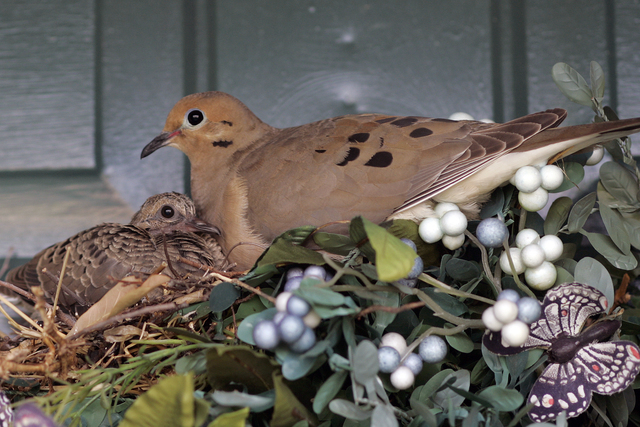Preparation helps to make dove hunting easier

With daytime temperatures still pushing well past 100 degrees, it may be hard to believe that opening day of the mourning dove hunting season is two weeks away. Though some big-game seasons have been underway for a couple of weeks, the dove season has long served as the traditional opener of the fall hunting season overall. Not only in Nevada but across the country.
In Yuma, Arizona, opening weekend of dove season plays such an important role in the community that this year it is hosting the World Championship Dove Cook-Off. Plans are to make this an annual event. There is even a website designed to help visiting hunters find places to hunt and other information they might need while in Yuma.
Unlike big-game hunting, which can require a significant amount of gear, dove hunting doesn’t require much to get started — a shotgun, a box or two of shells, a camouflage shirt, a vest or upland game bags, a hat and a cooler filled with ice. That’s it.
A trained hunting dog can be a real benefit and make a bird hunter’s life much easier, especially for finding downed birds, but having a dog is not a must. Notice that I said trained hunting dog. Nothing can ruin a good bird hunting adventure faster than an untrained dog. Not only for the hunter who owns the dog and ends up spending his time chasing or yelling at it but also for every other hunter in the vicinity who is forced to endure the show.
When it comes to shotguns, every hunter has his own preference. Perhaps the most popular choices are a 20- or 12-gauge, though every now and then you will find someone who still shoots a 16. Either one will serve the shooter well, if he has taken the time to become familiar with the gun and its shot pattern.
As for action type, that also is a matter of personal preference. An over-under, autoloader or pump-action shotgun will all do the job. And because the law requires that shotguns used for hunting migratory birds be restricted so they can hold no more than three shells total, there really isn’t much of a difference. Shoot the gun you are most comfortable shooting.
When it comes to shot shells, anything from 7½ to 9 will take a mourning dove. However, given our open spaces in Nevada, I prefer to hunt doves with something with a little heft to it. So I use shells loaded with 7½-shot. The extra weight per shot pellet will give me a little more effective range. If I found myself hunting in an area with tight cover and shorter shooting distances, then 9-shot might be the way to go.
Given the dove’s flight speed and propensity for aerial acrobatics, it generally takes more shells than one might think to bring home a limit of birds. So bring extra. Keep in mind that nontoxic shot is required on all state wildlife management areas and national wildlife refuges.
Doves have keen eyesight and can easily spot hunters who aren’t so good at concealment or who choose to wear bright colors. A simple camouflage or drab-colored shirt can do wonders in that department. A similarly colored hat will help to hide your face as well as provide protection from the sun and falling shot.
Though Nevada does not have a hunter orange requirement, don’t assume other states are the same. Check the regulations in any state you plan to hunt. Even if hunter orange is not required, it is a good idea when you find yourself hunting in a somewhat congested area with lots of other hunters.
A vest or upland game bags are a must. Like everything else, the choice to use one over the other is a matter of personal preference. I have used both. Vests can be a little warm early in the fall but provide convenient storage for live and spent shells. They generally come with a large game pocket in the back that easily can be reached from the front. Game bags provide similar carrying options but aren’t as warm as vests and are a little lighter.
Lastly, don’t forget a cooler and ice. Clean or breast your doves as soon as possible and get them on ice. Birds will go bad quickly in the late summer heat, and just as with big game, you need to keep your birds clean, cool and dry so they are at their best on the table.
Freelance writer Doug Nielsen is a conservation educator for the Nevada Department of Wildlife. His “In the Outdoors” column, published Thursday in the Las Vegas Review-Journal, is not affiliated with or endorsed by the NDOW. Any opinions he states in his column are his own. He can be reached at intheoutdoorslv@gmail.com.